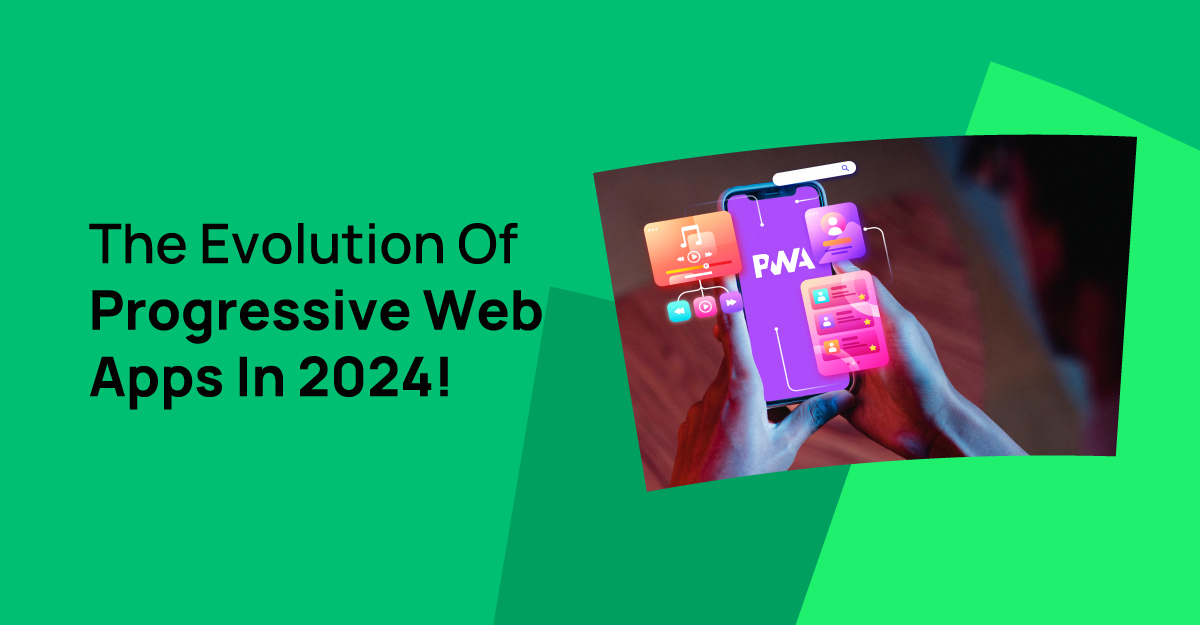Progressive web applications have become a crucial link between traditional experiences and the seamless functioning of mobile apps in the digital world of 2025
. These apps are a critical part of contemporary web development plans because, as a business, you may be working to meet customers' ever-evolving demands for faster, more dependable, and visually appealing interactions.
You can learn everything there is to know about progressive web apps, including how to design them and their advantages. Here is where the role of web application development services come into play, the experts who help with building of progression apps.
Basics About Progressive Web Apps
There are multiple types of web apps that keep coming to the market, and one such type of online application is a progressive web application. Usually, a distinct cross-platform development methodology is employed in its creation.
- These applications provide mobile-friendly web pages that you may install straight from your web browser on your phone, giving you the experience of using a native application when browsing the web on a mobile device without installing your app.
- Some websites, like Alibaba, the biggest B2B marketplace globally, can offer flawless mobile surfing thanks to these apps.
- Alibaba saw a significant improvement in mobile conversion of at least 76% and a 4x increase in engagement after making the switch to progressive web apps.
Evolution Of Progressive Web Apps
Steve Jobs first proposed the idea of progressive online applications during the historic 2007 introduction of the Apple iPhone. Jobs believed developers could create incredible experiences with Web 2.0 and Ajax that closely resemble an iPhone application.
However, attention was diverted from these apps when Apple and Google released native apps through their app stores. In 2016, Google officially introduced the term progressive web applications.
Critical Features Of Progressive Web Applications
- Progressive apps typically use service workers to cache essential resources. It enables them to operate where network access is inadequate or offline.
- The apps provide you with an interface which is easy to read and you can install on your device's home screen without using an app store.
- You should be aware that these apps can notify you via push notifications, which increases user retention and engagement.
Moreover, these applications offer improved loading times and seamless operation, especially in complex network scenarios.
Significant Differences Between Progressive Applications and Native Apps
Progressive web applications and native apps have significant differences, such as:
- Progressive apps are developed using web technologies like HTML and JavaScript, while native apps are built for specific platforms like Android or iOS using platform-specific languages.
- Unlike native apps, which must be downloaded and installed, these progressive apps may be accessed through web browsers and do not need to be installed from the app store.
Top Progressive Web Framework 2025
- Svelte is distinguished mainly by its distinct approach to web development. It provides a compiler that transforms components into imperative code that updates the DOM and is incredibly efficient.
- The novel method yields minimal bundle sizes and rapid runtime performance, which is critical for progressive web apps. Due to its vast ecosystem and component-based architecture, Facebook's React remains a dominant force in developing progressive web apps. React hooks and the context API are two features that can make developing complicated apps easier by streamlining logic reuse and state management.
Benefits Of Using Progressive Web App Development
- Progressive web applications cache several web page elements on the first visit. It results in quick loading times as compared to mobile-optimized websites
- These applications do not require the processing power or storage of native apps; it leads to instant responses to user gestures.
- Applications use service workers to have instant access to the cached resources. It allows a seamless browsing experience for you, even with slow or intermittent network connectivity
- Progressive web apps are low-resource versions of native programs with comparable functionality. This promotes user engagement and retention, speed, and the capacity to provide a satisfactory experience across sluggish connections.
- Unlike updating a native app, updating your progressive web apps is more accessible. There is no need to install this manually through the app store. The updates can be installed without causing any problems for you as a user. With the help of web application development.
Successful PWA Stories With Top Companies In 2025
- Starbucks: Starbucks utilized progressive web applications in 2025. This improved the customer experience significantly by offering offline functionality, allowing you to access the app without any internet connection. The move led to a doubling in daily activity users and a notable 23% rise in order.
- Forbes: Forbes experienced success with progressive web applications in 2025, offering customized content notifications and faster performance compared to the mobile website. This resulted in at least a 43% increase in sessions per user and 20% higher ad viewability, besides 1000% engagement in progressive in mobile app development.
- Uber: Uber also employed a progressive web application in 2025, which reduced the storage space needed and guaranteed quick load times even in places with spotty network connectivity. This increased your accessibility to and convenience with the ride-hailing service. Highlighting the advantages of progressive web apps, providing a smooth user experience, and providing robust offline support
Will Progressive Web Applications Replace Native Apps?
Progressive web apps undoubtedly have many benefits, but it's still unclear if they will completely replace native apps. Although progressive web applications offer improved user experiences, faster load times, and more straightforward updates, it's important to remember that they're still in the early stages of development.
The absence of complete iOS support for progressive web apps is one of their main drawbacks since the Safari browser only partially supports capabilities like web manifest files and background sync for push notifications.
However, there are hints that Apple is gradually pushing users to switch from native apps to web applications, which may result in more support. There is a possibility that progressive web applications might replace native apps in the coming decade as technology continues to improve and heavyweights like Google put more muscle behind PWA.
Conclusion
In 2025, progressive web app development will have established itself as an essential part of web development, for they can combine the best web and mobile experiences, which has led to widespread adoption across industries. As you move forward, progressive web applications will continue to play a vital role in shaping the future of digital web experiences.



